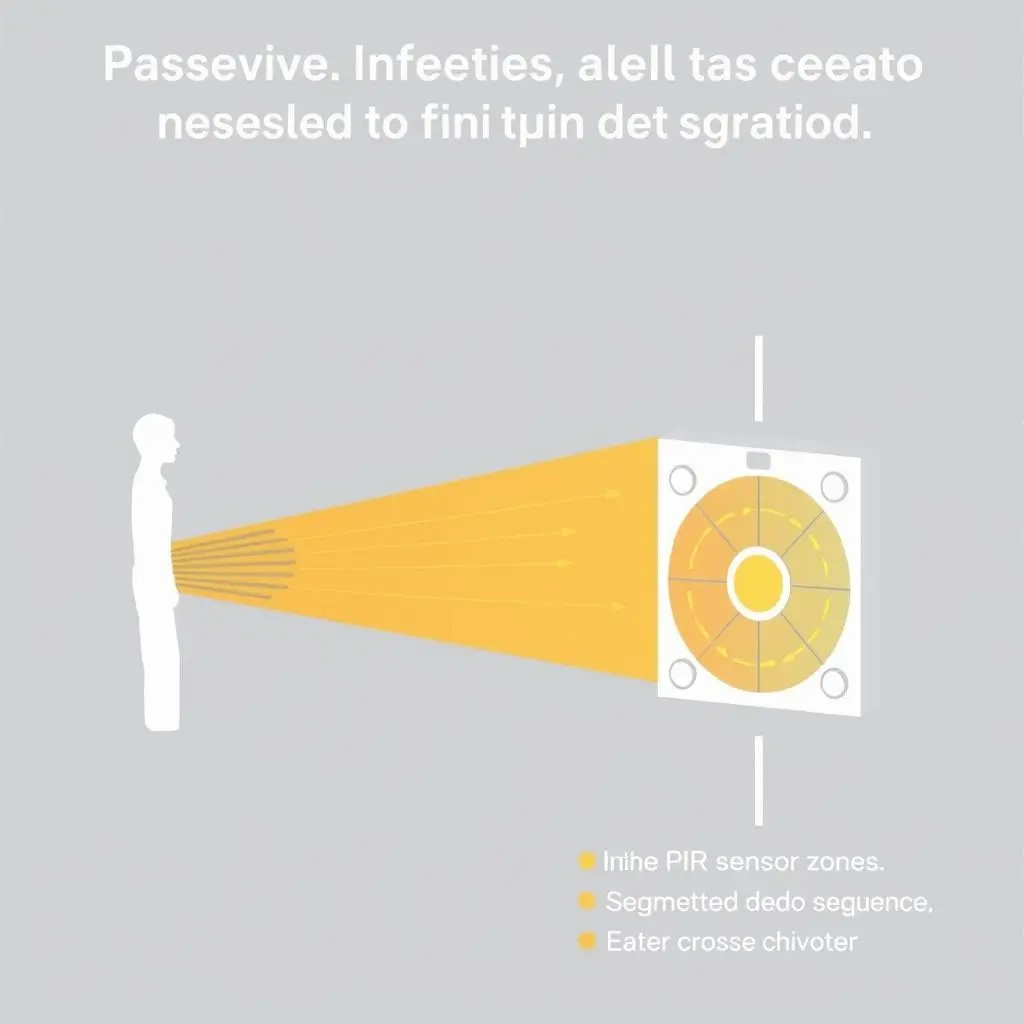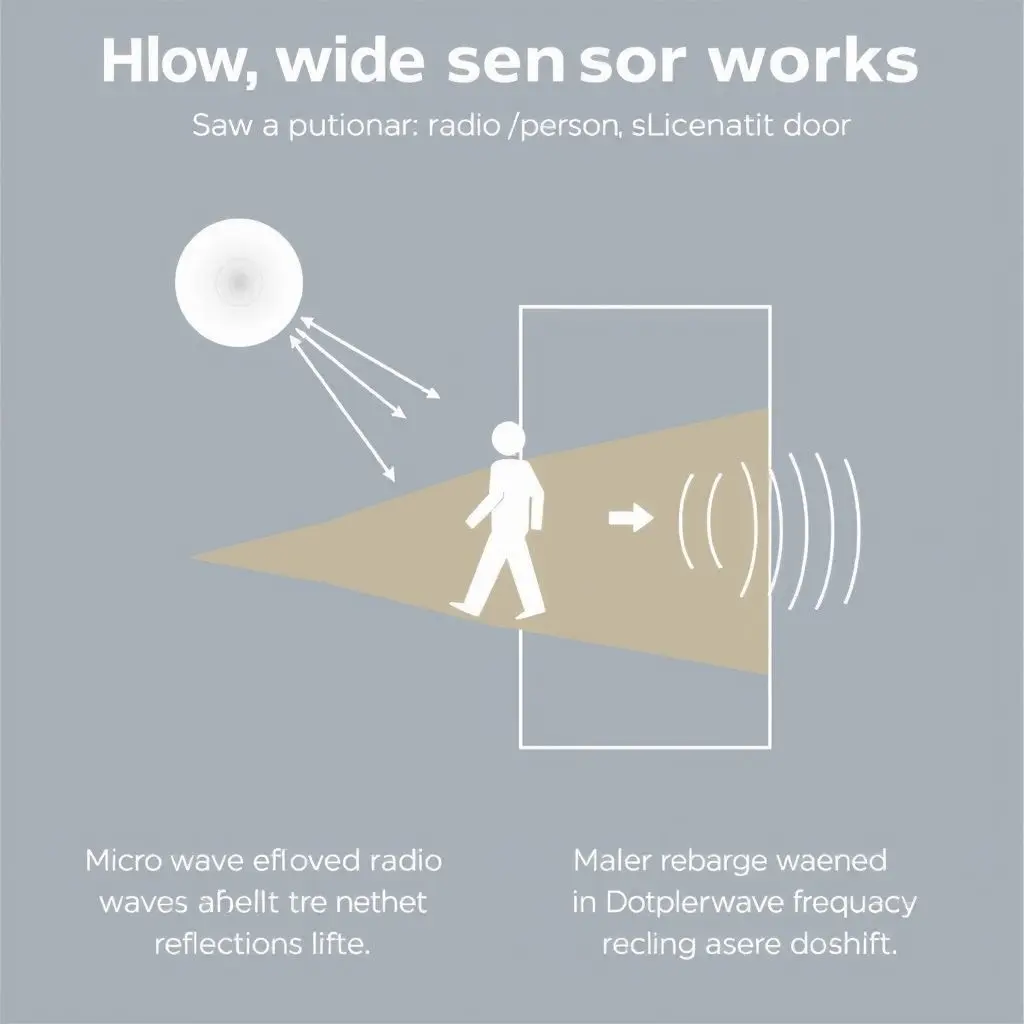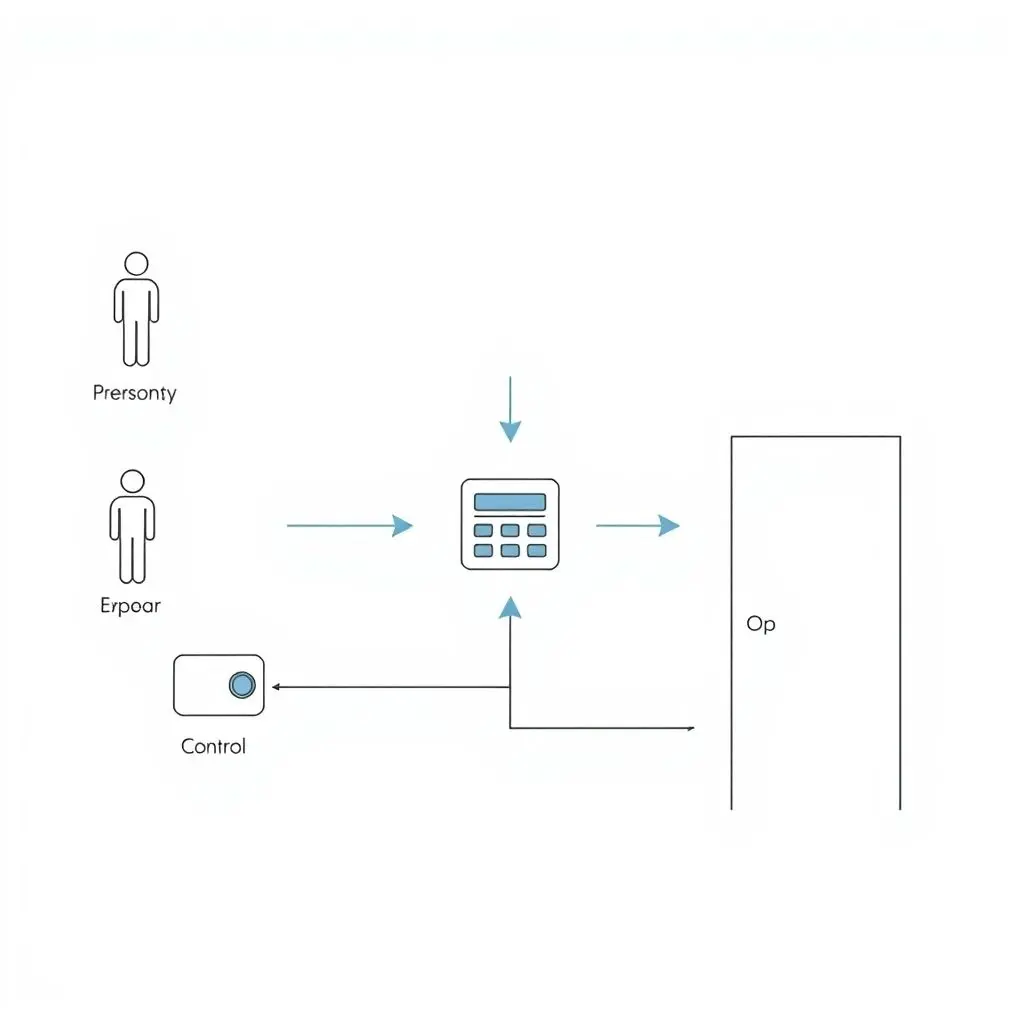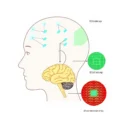You’ve been there, right? Approaching a building entrance, maybe hands full, maybe just lost in thought, and boom – the doors glide open as if by pure telekinesis. It feels a bit like everyday magic, a silent acknowledgment of your presence that paves your way forward without you lifting a finger. But this isn’t enchantment at play; it’s the result of some surprisingly clever engineering hiding in plain sight.
That seamless opening act? It’s thanks to motion sensors. Far more sophisticated than a simple pressure plate of old, these sensors act as the vigilant ‘eyes’ of the automatic door system, constantly scanning the approach zone. They don’t just react when you touch something; they *sense* you coming, often before you’re even right in front of the door.
Curious how these invisible sentinels detect your arrival and command heavy doors to move? Let’s delve into the technology that makes this common convenience work.
Got a minute? Here’s a quick visual rundown of the magic:
Table of Contents
The Core Idea: Sensing Your Arrival
At its heart, an automatic door system is a chain reaction: detection leads to action. The motion sensor is the crucial first link. Its job is to perceive movement or presence within a designated area near the door. Once the sensor detects what it’s looking for – usually a person or object approaching – it sends a signal. This signal tells the door’s control unit, which in turn activates the door’s motor and mechanical opening system.
It sounds simple, but the reliability and efficiency of this process depend entirely on the type and quality of the sensor used. Not all motion sensors work the same way, and understanding their differences is key to appreciating the ‘how’.
The “Eyes” of the Door: Types of Motion Sensors
While various technologies exist, the most common types of motion sensors employed in automatic doors are Passive Infrared (PIR) and Microwave sensors. They utilize different principles to detect presence but serve the same ultimate goal: knowing when something is approaching.
Passive Infrared (PIR) Sensors: Sensing Your Heat Signature
Think of PIR sensors as detectors of heat. Everything that has a temperature above absolute zero emits infrared radiation – including you! PIR sensors are ‘passive’ because they don’t emit any energy themselves; they simply *sense* the infrared energy radiating off objects and people in their detection zone.
A typical PIR sensor used in automatic doors contains a special crystal or material that generates an electrical charge when exposed to infrared radiation. The magic happens when the sensor is covered by a segmented lens (often Fresnel lens arrays). This lens breaks the detection area into multiple zones – alternating between sensitive and non-sensitive segments. When a heat source, like a person, moves across these segments, the sensor detects changes in the amount of infrared radiation hitting different parts of its sensing element. It’s the *change* in the infrared pattern caused by movement that triggers the sensor.

Pros for Door Use:
- Generally reliable for detecting human movement within a confined zone.
- Less prone to interference from outside the detection zone compared to some other types.
- Energy efficient as they don’t emit energy.
Cons for Door Use:
- They primarily detect *movement* of a heat source. If a person approaches and then stands perfectly still within the detection zone, the sensor may eventually time out and the door could attempt to close (though safety sensors should prevent this).
- Performance can sometimes be affected by ambient temperature, especially extreme heat or cold, though modern sensors are designed to compensate.
Microwave Sensors: Riding the Radio Waves
Unlike PIR, microwave sensors are ‘active’. They work by emitting low-power microwave radio waves into a specific area. When these waves encounter an object (like a person), they are reflected back to the sensor. If the object is moving, the frequency of the reflected waves changes slightly compared to the emitted waves. This phenomenon is known as the Doppler effect (the same principle that causes a siren’s pitch to change as it passes you).
The sensor measures this frequency shift. If a significant shift is detected, it indicates movement within the monitored zone, triggering the door to open.

Pros for Door Use:
- Excellent at detecting movement across a wider, often adjustable, area.
- Can detect movement even if the person is standing still after initial detection (if configured with presence hold time) or moving very slowly, as long as there’s a Doppler shift.
- Less affected by temperature variations compared to PIR.
- Can sometimes detect movement through non-metallic materials, though this sensitivity is usually adjusted to avoid nuisance activations.
Cons for Door Use:
- Can be triggered by movement outside the desired zone if not properly calibrated, such as pedestrians walking past on a sidewalk close to the door.
- More susceptible to electrical interference than PIR.
- They are active emitters, consuming slightly more power than passive sensors.
Comparing PIR and Microwave
In many modern automatic door installations, you’ll find a combination of sensor types or sophisticated dual-technology sensors that blend PIR and microwave capabilities. PIR is often excellent for detecting presence and movement right in front of the door, while microwave sensors can provide a wider detection field for approaching traffic. The choice depends heavily on the building’s entrance layout, pedestrian traffic patterns, and desired security/safety levels.

Beyond the Sensor: How the Signal Opens the Door
Detecting presence is just the first step. Once the sensor is triggered, here’s the chain reaction that follows:
- Signal Transmission: The sensor sends an electrical signal to the door’s control panel or logic controller.
- Processing: The control panel, essentially the ‘brain’ of the system, receives the signal. It confirms the signal is valid (e.g., from an activated motion sensor) and initiates the opening sequence. This unit also manages parameters like opening/closing speed, hold-open time, and interfaces with safety sensors.
- Motor Activation: The control panel sends a command to the door’s electric motor.
- Mechanism Engagement: The motor drives a mechanism (like a belt, gearbox, or hydraulic system) that is mechanically linked to the door panels.
- Door Movement: The mechanism physically moves the door panels, sliding them open or pushing them outwards, clearing the path.
Crucially, alongside the primary activation sensors, automatic doors are equipped with safety sensors (like presence sensors near the closing path, or push plates/buttons for alternative activation) to prevent them from closing on a person or object caught in the doorway. While motion sensors get you *in*, safety sensors ensure you don’t get *stuck* or injured on the way through.
 Invisible Light & Clever Sensors: How Touchless Faucets Actually Work
Invisible Light & Clever Sensors: How Touchless Faucets Actually Work
 Thought to Motion: Unpacking the World of Mind-Controlled Prosthetics
Thought to Motion: Unpacking the World of Mind-Controlled Prosthetics
 How Does Facial Recognition Work? Unmasking the Tech Behind the Glance
How Does Facial Recognition Work? Unmasking the Tech Behind the Glance
 Beyond the Static: Unveiling the Incredible Tech Behind the Search for Alien Intelligence
Beyond the Static: Unveiling the Incredible Tech Behind the Search for Alien Intelligence
 Forever Charged? The Wearable Tech That Sips Power From Your Body Heat
Forever Charged? The Wearable Tech That Sips Power From Your Body Heat